MMB Research ZGB357PA10 RAPIDSE ZIGBEE SMART ENEGRY User Manual
MMB Research Inc. RAPIDSE ZIGBEE SMART ENEGRY Users Manual
Users Manual
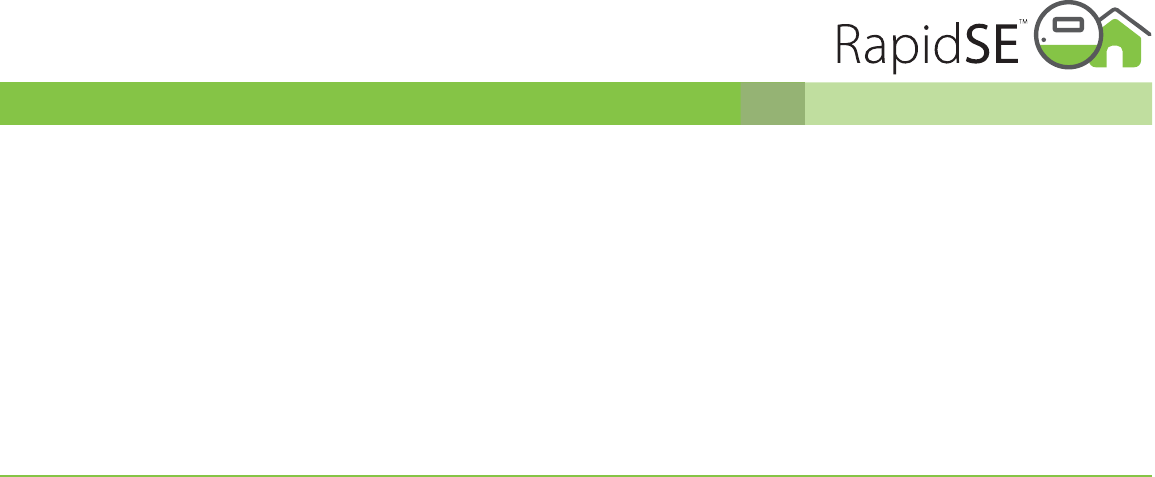
DRAFT
RapidSE ZigBee Smart Energy Module
ZGB.357.PA.1.0 Rev 1.5
The RapidSE Module is a drop-in ZigBee Smart Energy solution.
Preloaded with MMB Research’s RapidSE ZigBee Smart Energy
application, it offers hardware vendors an easy way to integrate
a fully-implemented, automated ZigBee Smart Energy platform
into their existing devices.
MMB Research offers a variety of hardware and software
development tools to facilitate integration. For more
information, please visit http://www.mmbresearch.com
Contents
1 | General Information 2
2 | Module Pinout 2
3 | Electrical Specications 3
3.1 | Absolute Maximum Ratings 3
3.2 | Recommended Operating Conditions 3
3.3 | DC Electrical Characteristics 3
4 | RF Specications 4
4.1 | Receive Specifications 4
4.2 | Transmit Specifications 5
4.3 | Synthesizer 5
5 | Functional Specications 6
5.1 | Serial Ports 6
5.2 | GPIO 7
5.3 | Analog to Digital Converter (ADC) 8
6 | Mechanical Specications 9
6.1 | Physical Dimensions 9
6.2 | Recommended Land Pattern (Surface Mount) 10
6.3 | Connector Specifications 11
6.4 | Labelling 11
7 | Soldering Temperature Time Prole for reow soldering (Lead-free solder) 11
8 | Regulatory Approvals 12
8.1 | FCC 12
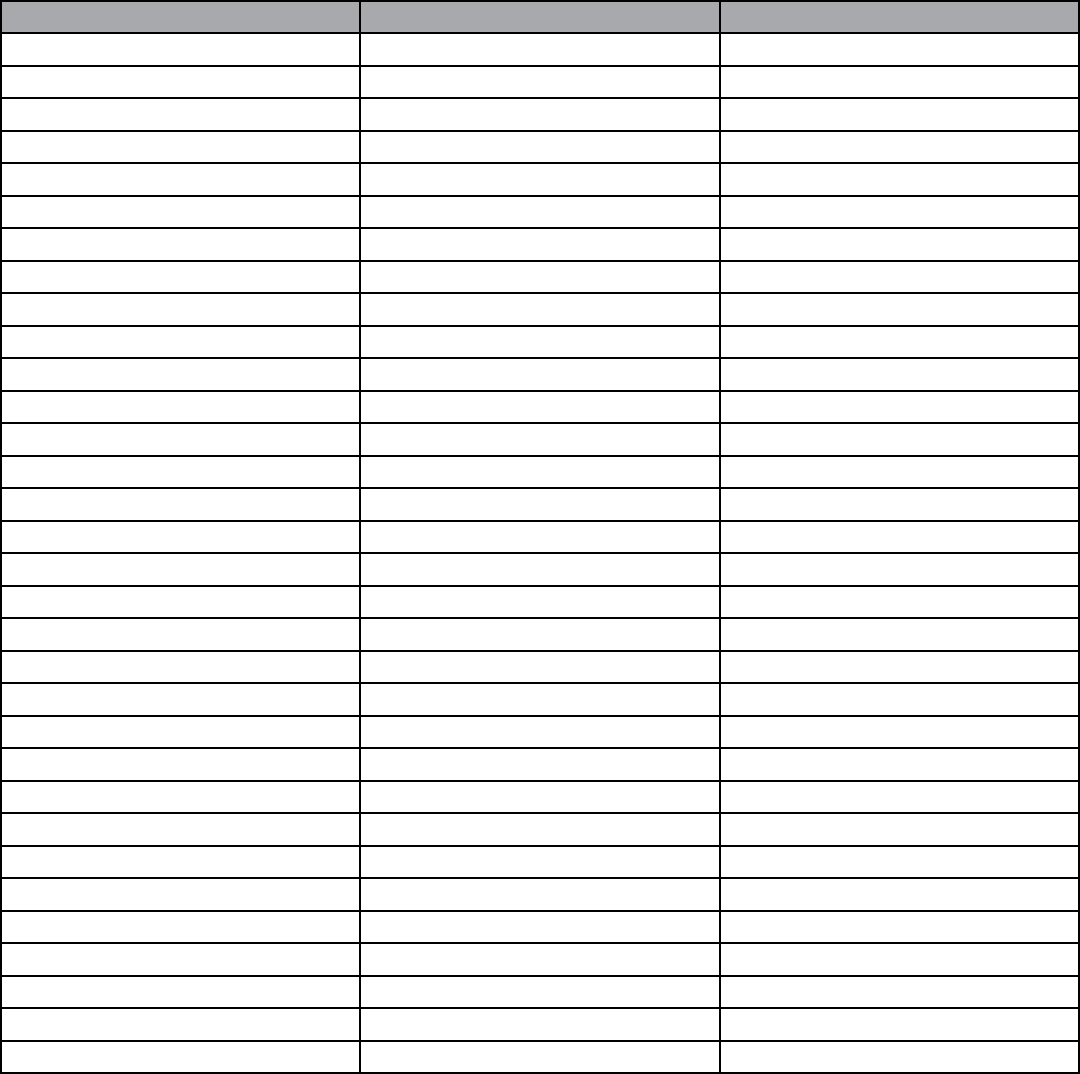
DRAFT
1 | General Information
Note that some of the specifications refer to either EM357 or Module. Please note specifications cited as EM357 are taken
from the EM357 datasheet (this should also be noted where referred to). Module means measurements taken with our
production module.
Numbers in parentheses are the EM357 pin number.
Module Pad Function EM357 GPIO
1 GND
2 Module UART RX GPIO10 (33)
3 Module UART TX GPIO9 (32)
4 GPIO6 (29)
5 GPIO7 (30)
6 GPIO5 (27)
7 GPIO4 (26)
8 GPIO12 (20)
9 GPIO11 (19)
10 VCC
11 GND
12 Host Controlled Handshake Line GPIO3 (25)
13 Module Controlled Handshake Line GPIO8 (31)
14 SPI Slave CLK GPIO2 (24)
15 SPI Slave In GPIO0 (21)
16 SPI Slave Out GPIO1 (22)
17 nReset (13)
18 VCC
19 GND
20 n.c.
21 n.c.
22 GND
23 nReset (13)
24 SIF CLK (34)
25 SIF MISO (35)
26 SIF MOSI (36)
27 nSIF LOAD (37)
28 GPIO16 (40)
29 GPIO15 (41)
30 GPIO14 (42)
31 GPIO13 (43)
32 GND
2 | Module Pinout
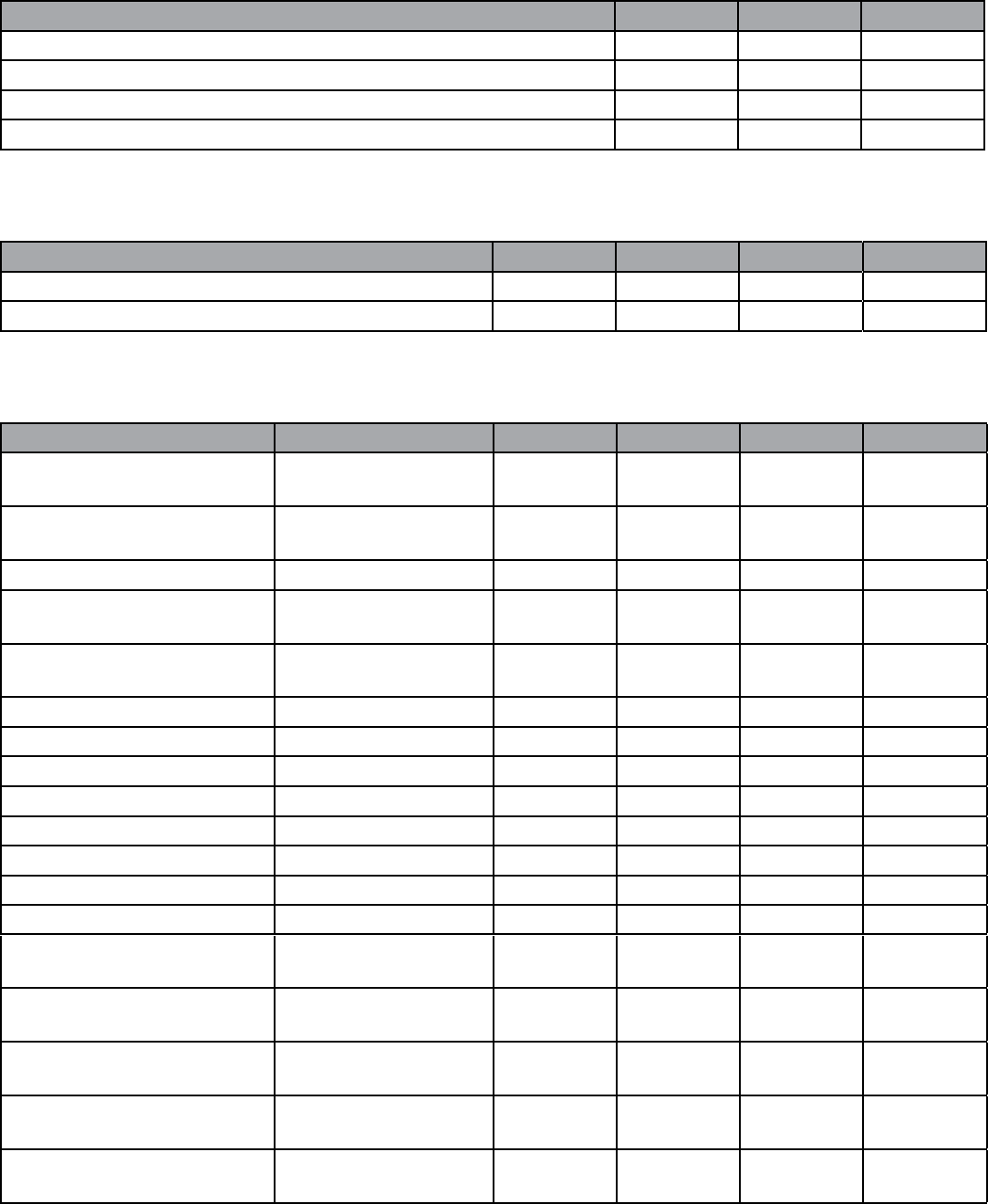
DRAFT
3 | Electrical Specications
3.1 | Absolute Maximum Ratings
3.2 | Recommended Operating Conditions
3.3 | DC Electrical Characteristics
Parameter Minimum Maximum Units
Supply Voltage (VCC) -0.3 3.6 V
Voltage on any GPIO[0:16], SIF CLK, SIF MISO, SIF MOSI, nSIF LOAD, nReset -0.3 VCC +0.3 V
Ambient Operating Temperature -40 +85 °C
Storage Temperature -40 +125 °C
Parameter Minimum Typical Maximum Units
Supply Voltage (VCC) 2.7 3.3 3.6 V
Temperature Range -40 +85 °C
Parameter Test Condition Minimum Typical Maximum Units
Deep sleep current At 25 °C, VCC = 3.3v,
shutdown mode
10.5 µA
Idle current At 25 °C, VCC = 3.3v,
sleep mode
7.8 mA
RX current At 25 °C, VCC = 3.3v 36 mA
TX current At 25 °C, VCC = 3.3v,
boost mode
220 mA
TX current At 25 °C, VCC = 3.3v,
normal mode
190 mA
Input voltage for logic 0 0 0.2 x VCC V
Input voltage for logic 1 0.8 x VCC VCC V
Input current for logic 0 -0.5 µA
Input current for logic 1 0.5 µA
Input pull-up resistor value 30 kΩ
Input pull-down resistor value 30 kΩ
Output voltage for logic 0 0 0.18 x VCC V
Output voltage for logic 1 0.82 x VCC VCC V
Output source current
(standard current pad)
4 mA
Output sink current
(standard current pad)
4 mA
Output source current
(high current pad: GPIO[16:13] )
8 mA
Output sink current
(high current pad: GPIO[16:13] )
8 mA
Total output current
(for I/O pads)
40 mA
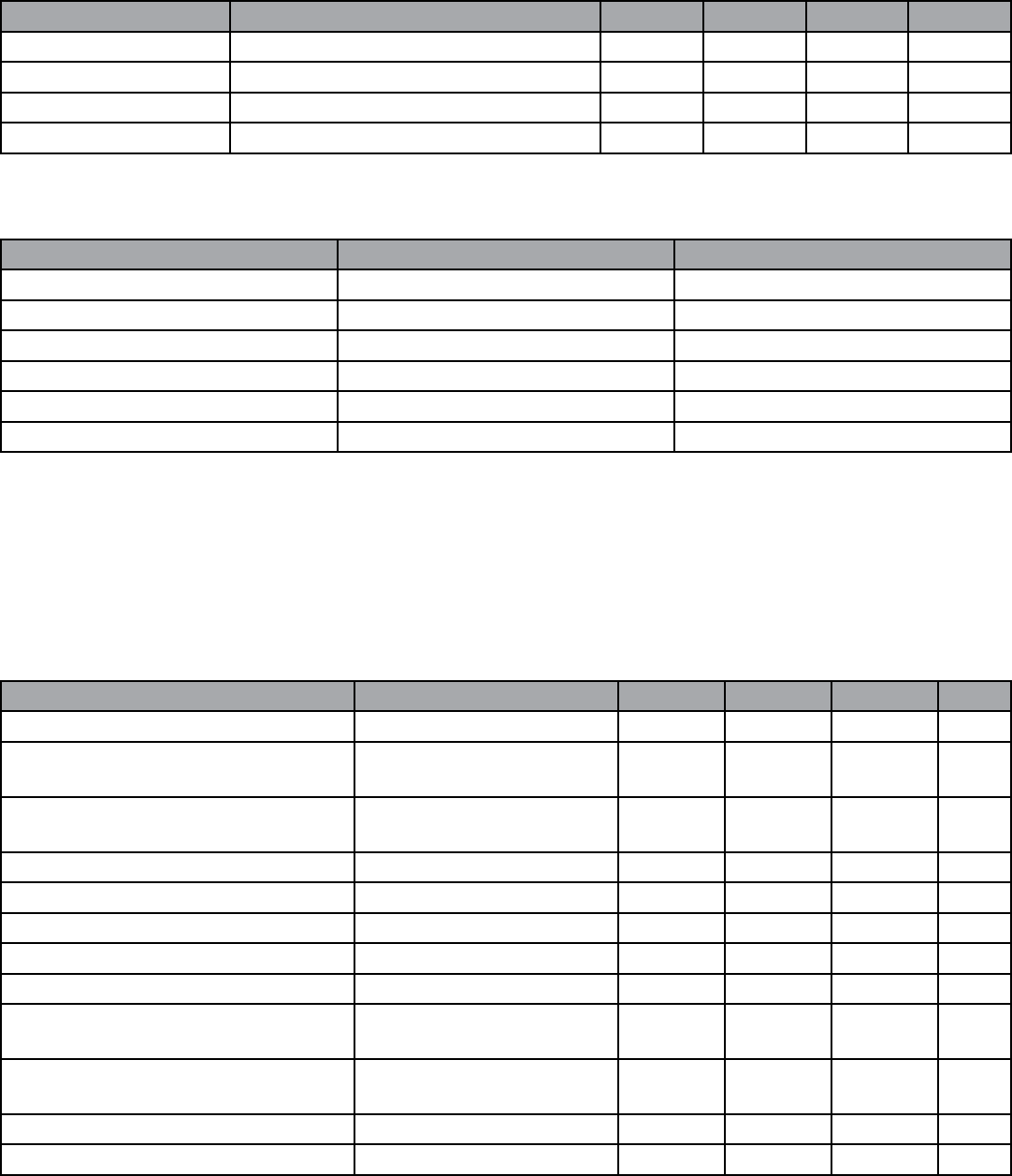
DRAFT
4 | RF Specications
4.1 | Receive Specifications
Module Receive Characteristics
Receive Strength Signal Indicator (RSSI) Accuracy
EM357 Receive Characteristics
Parameter Test Condition Min Typical Max Units
Receive sensitivity Max gain -97.56 dBm
Receive sensitivity (Boost) Max gain -99.53 dBm
Input 1dB Compression CW +26 dBm
Input IP3 Two -7 dBm CW tones spaced 1 MHz apart +36 dBm
Parameter Test Condition Minimum Typical Maximum Units
Frequency range 2400 2500 MHz
Sensitivity (Boost mode) 1% PER, 20 byte packet
defined by IEEE 802.15.4
-100 -95 dBm
Sensitivity 1% PER, 20 byte packet
defined by IEEE 802.15.4
-99 -94 dBm
High-side adjacent channel rejection IEEE 802.15.4 signal at -82dBm 35 dB
Low-side adjacent channel rejection IEEE 802.15.4 signal at -82dBm 35 dB
2nd high-side adjacent channel rejection IEEE 802.15.4 signal at -82dBm 43 dB
2nd low-side adjacent channel rejection IEEE 802.15.4 signal at -82dBm 43 dB
Channel rejection for all other channels IEEE 802.15.4 signal at -82dBm 40 dB
802.11g rejection centered at +12MHz or
-13MHz
IEEE 802.15.4 signal at -82dBm 35 dB
Maximum input signal level for correct
operation (low gain)
0 dBm
Image suppression 30 dB
Co-channel rejection IEEE 802.15.4 signal at -82dBm -6 dBc
Channel Actual Level Measured RSSI
18 -40 -40.0
18 -50 -50.0
18 -60 -60.0
18 -70 -70.0
18 -80 -79.0
18 -90 -89.2
This table lists the key parameters of the integrated IEEE 802.15.4 receiver on the EM357. This information is taken from the Ember
EM357 Datasheet. Link to this document can be found in the References section.
Note: Receive Measurements were collected with Ember’s EM357 Lattice Balun Reference Design (Version B1) at 2440MHz and using
the EmberZNet software stack Version 3.0.1. The Typical number indicates one standard deviation above the mean, measured at room
temperature (25C). The Min and Max numbers were measured over process corners at room temperature.
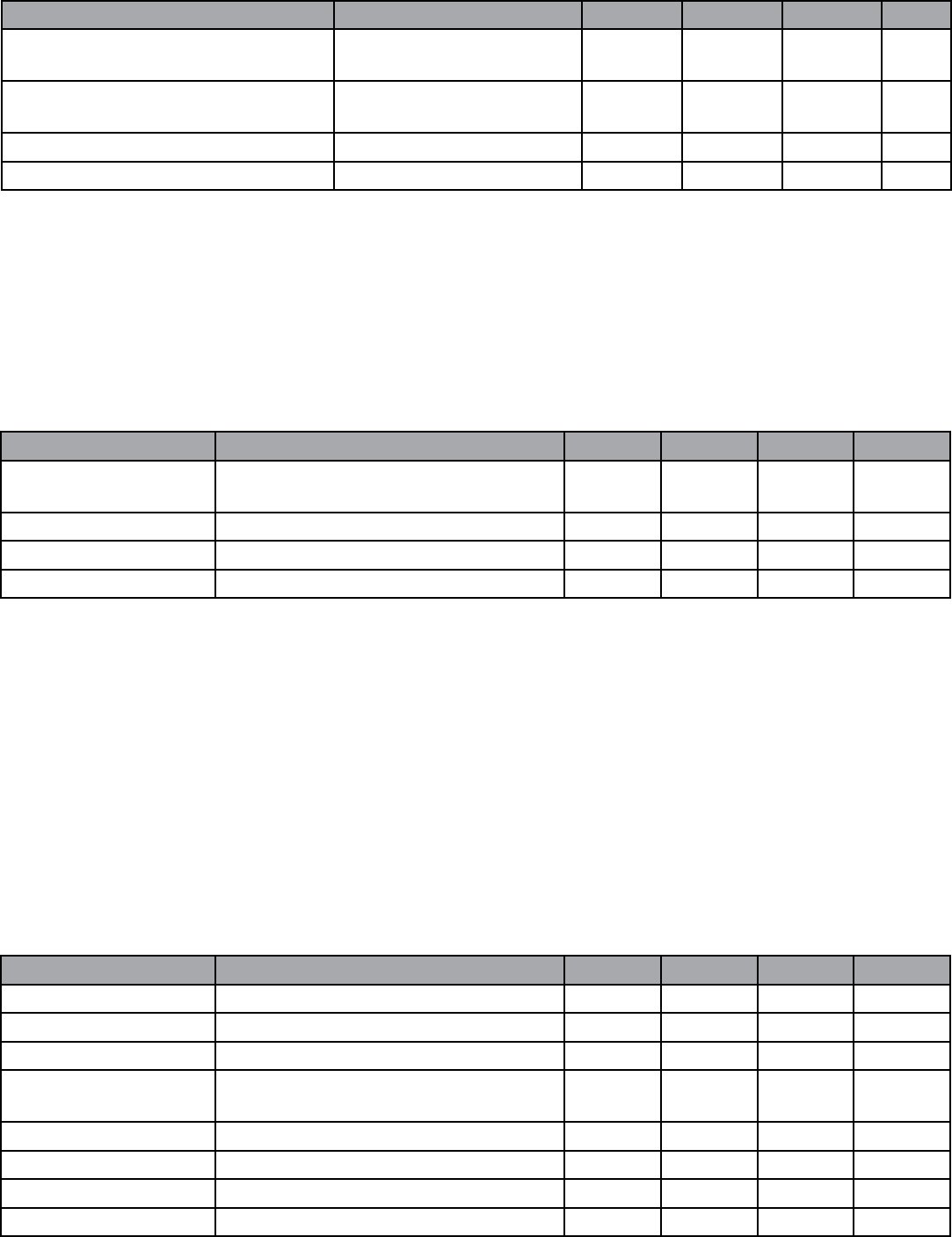
DRAFT
Parameter Test Condition Minimum Typical Maximum Units
Relative frequency error
(2x40 ppm required by IEEE 802.15.4)
-120 +120 ppm
Relative timing error
(2x40 ppm required by IEEE 802.15.4)
-120 +120 ppm
Linear RSSI range 40 dB
RSSI Range -90 -30 dB
EM357 Receive Characteristics | Continued
4.2 | Transmit Specifications
4.3 | Synthesizer
Module Transmitter Parameters
EM357 Synthesizer Parameters
Parameter Test Condition Min Typical Max Units
Maximum output power
(Boost mode)
At highest power setting 20.45 dBm
Carrier frequency error -40 -10 +40 ppm
PSD mask relative 3.5 MHz away -20 dB
PSD mask absolute 3.5 MHz away -30 dBm
Parameter Test Condition Min Typical Max Units
Frequency range 2400 2500 MHz
Frequency resolution 11.7 kHz
Lock time From off, with correct VCO DAC setting 100 µs
Relock time Channel change or Rx/Tx turnaround (IEEE
802.15.4 defines 192μs turnaround time)
100 µs
Phase noise at 100kHz -71 dBc/Hz
Phase noise at 1MHz -91 dBc/Hz
Phase noise at 4MHz -103 dBc/Hz
Phase noise at 10MHz -111 dBc/Hz
This table lists the key parameters of the integrated synthesizer on the EM357. Taken from the EM357 datasheet.
DRAFT
5 | Functional Specications
5.1 | Serial Ports
5.1.1 | SC1 (UART, SPI, I2C)
Refer to the EM357 data sheet for functionality and associated GPIO pin outs.
Note: The module pin out table in section 2 of this document provides a cross reference between the MMB PA module
pins and the EM357 GPIO.
The SC1 module provides asynchronous (UART) or synchronous (SPI or I2C) serial communications.
The UART mode contains the following features:
• Baud rate (300bps up to 921kbps)
• Data bits (7 or 8)
• Parity bits (none, odd, or even)
• Stop bits (1 or 2)
• GPIO signals:
ʳ TXD
ʳ RXD
ʳ nRTS (optional)
ʳ nCTS (optional)
The SPI mode has the following features:
• Full duplex operation
• Programmable clock frequency (12MHz max.)
• Programmable clock polarity and clock phase
• Selectable data shift direction (either LSB or MSB first)
• Master mode only
• Fixed 8 bit word length
• The following signals can be made available on the GPIO pins:
ʳ MO (master out)
ʳ MI (master in)
ʳ MCLK (serial clock)
The SC1 I2C mode has the following features:
• Programmable clock frequency (400kHz max.)
• Supports both 7-bit and 10-bit addressing
• The SC1 I2C controller is only available in master mode.
• The I2C Master controller supports Standard (100kbps) and Fast (400kbps) I2C modes.
• Multiple master applications are not supported.
• The I2C signals are open-collector and external pull-up resistors are required.
• The following signals can be made available on the GPIO pins:
ʳ MSDA (serial data)
ʳ MSCL (serial clock)
DRAFT
5.1.2 | SC2 (SPI, I2C)
The SC2 module provides synchronous (SPI or I2C) serial communications.
The SC2 SPI mode has the following features:
• The SPI mode of the SC2 supports both master and slave modes.
• It has a fixed word length of 8 bits.
• Master and slave modes
• Full duplex operation
• Programmable master mode clock frequency (12MHz max.)
• Slave mode up to 5MHz bit rate
• Programmable clock polarity and clock phase
• Selectable data shift direction (either LSB or MSB first)
• Optional slave select input
• The following signals can be made available on the GPIO pins:
ʳ MOSI (master out/slave in)
ʳ MISO (master in/slave out)
ʳ MSCLK (serial clock)
ʳ nSSEL (slave select—only in slave mode)
The SC2 I2C mode has the following features:
• The SC2 I2C controller is only available in master mode.
• The I2C Master controller supports Standard (100kbps) and Fast (400kbps) I2C modes.
• Multiple master applications are not supported.
• The I2C signals are open-collector, and external pull-up resistors are required.
• Programmable clock frequency (400kHz max.)
• 7- and 10-bit addressing
• The following signals can be made available on the GPIO pins:
ʳ SDA (serial data)
ʳ SCL (serial clock)
5.2 | GPIO
The EM357 has 17 multi-purpose GPIO pins that can be configured in a variety of ways. All pins have the following
programmable features:
• Selectable as input, output, or bi-directional.
• Output can be totem-pole, used as open drain or open source output for wired-OR applications.
• Can have internal pull-up or pull-down.
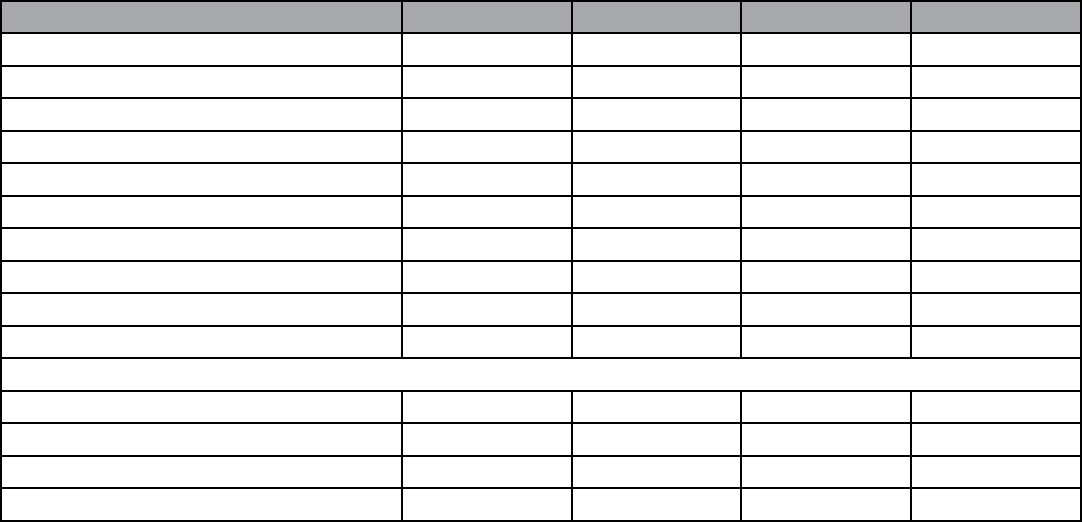
DRAFT
5.3 | Analog to Digital Converter (ADC)
The ADC is a first-order sigma-delta converter sampling at 1MHz with programmable resolution and conversion
rate. the ADC Module supports both single-ended and differential inputs.
Parameter Minimum Typical Maximum Units
Conversion time 32 4096 µ S
VREF 1.19 1.2 1.21 V
VREF output current 1 mA
VREF load capacitance 10 nF
Minimum input voltage 0 V
Maximum input voltage VCC V
Single-ended signal range 0 VREF V
Differential signal range - VREF + VREF V
Common mode range 0 VREF V
Input referred ADC offset -10 10 mV
Input impedance
When taking a sample 1 M Ohm
When not taking a sample 10 M Ohm
INL -0.5 0.5 LSB
DNL -0.5 0.5 LSB
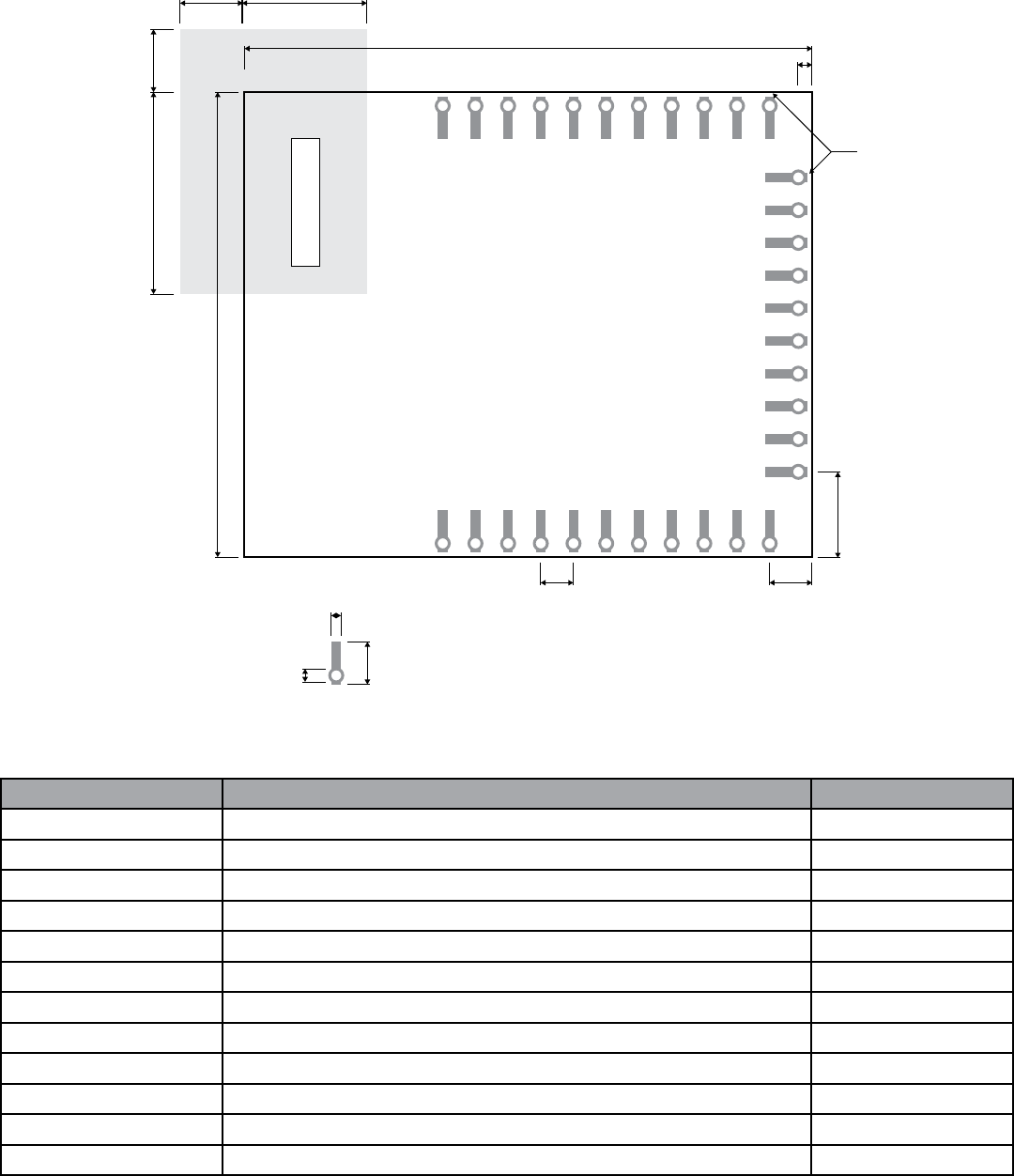
DRAFT
6.1 | Physical Dimensions
Symbol Description Distance
L Length of the module 34.73 mm
W Width of the module 28.43 mm
H Height of the module 4.45 mm
A1 Pitch 2 mm
A2 Distance centre of pad to PCB edge 2.59 mm
A3 Distance center of pad to PCB edge 5.22 mm
A4 Distance pad edge to PCB edge 0.29 mm
A5 Distance center of via to PCB edge 0.84 mm
R1 Keep-out zone from corner of PCB 5 mm (minimum)
R2 Keep-out zone from corner of PCB 5 mm (minimum)
R3 Width of keep-out zone 15 mm
R4 Length of keep-out zone 5.5 mm
1 11
32 22
12
21
A5
L
W
A4
A2
A3
A1
2.6 mm
0.6 mm
0.8 mm
R2
R1 R4
R3
A
N
T
E
N
N
A
6 | Mechanical Specications
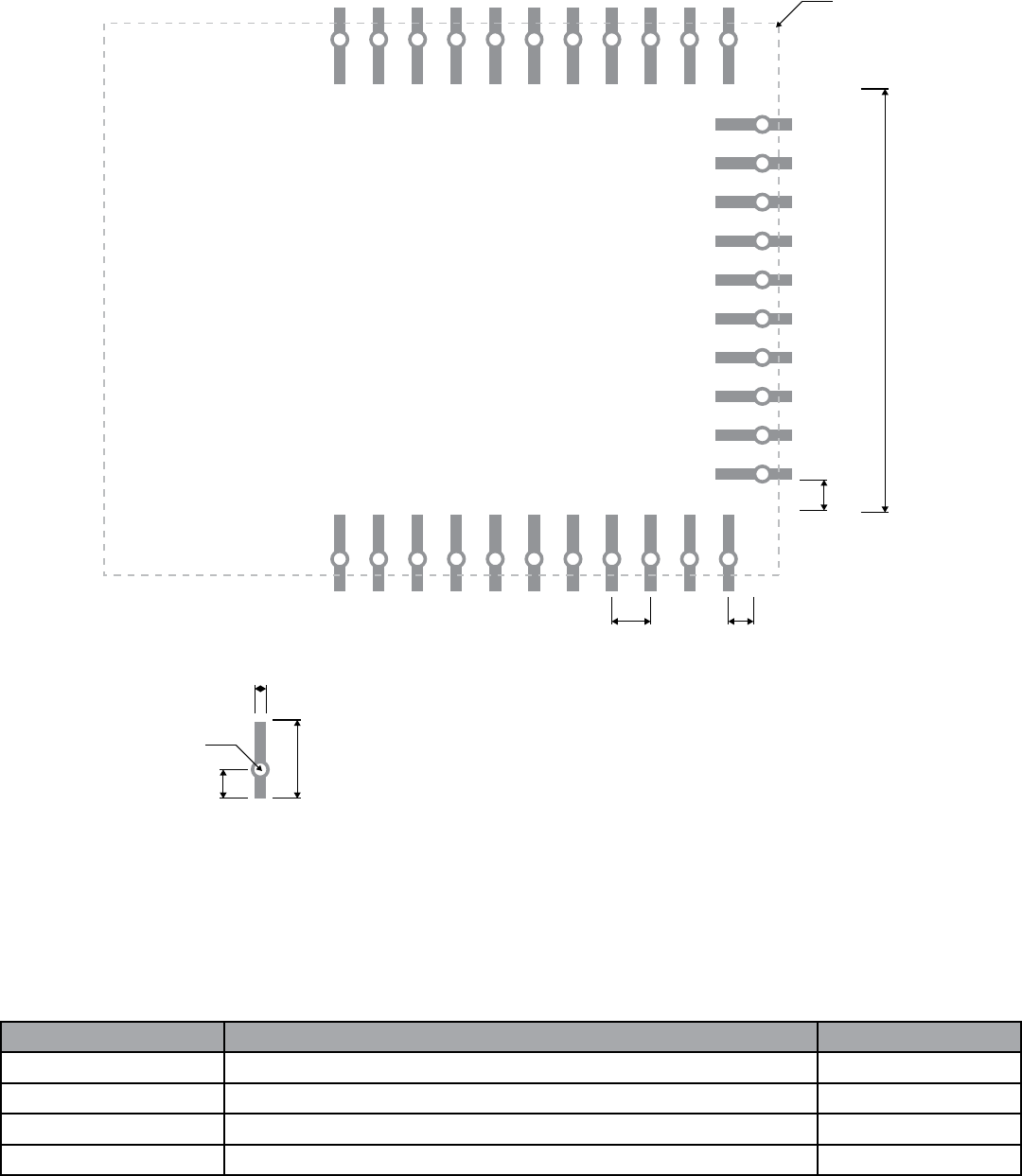
DRAFT
Symbol Description Distance
F1 Distance pad edge to pad edge 21.9 mm
F2 Distance pad edge to pad edge 1.523 mm
F3 Distance pad center to pad center 1.3 mm
F4 Pitch 2 mm
1 11
32 22
12
21
F1
F2
1.51 mm
3.94 mm
0.854 mm
d = 0.8 mm
F4 F3
module outline
6.2 | Recommended Land Pattern (Surface Mount)
Note: It is advised that for surface mount applications, through holes / vias should not be designed into the carrier board.
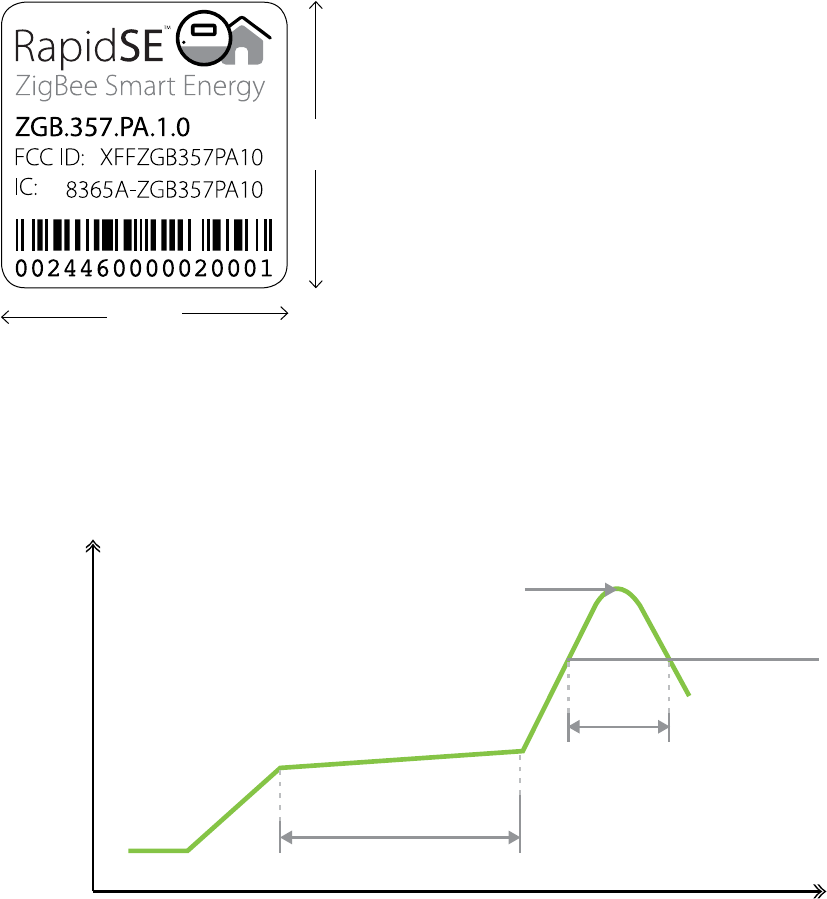
DRAFT
7 | Soldering Temperature Time Prole for reow soldering (Lead-free solder)
150˚C - 190˚C
220˚C
30 +20/-10s
90 ±30s
230˚C - 240˚C max
Temp
[ ˚C ]
Time [ s ]
Maximum reflow cycles: 2
Opposite-side reflow is prohibited due to the module weight. You must not place the module on the bottom / underside
of your PCB and re-flow.
6.3 | Connector Specifications
6.4 | Labelling
6.3.1 | Edge Mount (USNAP) Connector
6.3.2 | SIP Header / Socket
10 pin 2mm pitch right angle female header
11 + 11 + 10 (if no USNAP populated) pin 2mm pitch 0.8mm diameter through hole footprint
20 mm
20 mm

DRAFT
8.1.1 | FCC Notice
8.1 | FCC
8 | Regulatory Approvals
This device (ZGB.357.PA.1.0) complies with Part 15 of the FCC rules. Operation is subject to the following two conditions:
(1) This device may not cause harmful interference, and
(2) This device must accept any interference received, including interference that may cause undesired operation.
To comply with FCC RF Exposure requirements, users of this device must ensure that the module be installed and/or
configured to operate with a separation distance of 20cm or more from all persons.
8.1.3 | Labeling Requirements
The user of this device is responsible for meeting the FCC labeling requirements. A clearly visible label on the exterior
enclosure of an incorporating device must list the MMB Research Inc. FCC ID “XFFZGB357PA10” and the FCC Notice above
(section 7.1.1).
Devices intended for sale in the Canadian market should also include the Industry Canada (IC) ID “8365A-ZGB357PA10”
8.1.2 | Modular Approval
This device (ZGB.357.PA.1.0) meets the requirements for modular transmitter approval as detailed in the FCC public notice
DA 00-1407.
It should be noted that:
“While the applicant for a device into which an authorized module is installed is not required to obtain a new authorization
for the module, this does not preclude the possibility that some other form of authorization or testing may be required for
the device (e.g., a WLAN into which an authorized module is installed must still be authorized as a PC peripheral, subject to
the appropriate equipment authorization).”
-- FCC Public Notice DA 00-1407
Caution:
Changes or modifications not expressly approved by the party responsible for compliance could void the user’s authority
to operate the equipment.
Rev 1.5 | Apr 1, 2010
25 Prince Arthur Ave.
Toronto, Ontario, Canada
M5R1B2
416.636.3145
info@mmbresearch.com
www.mmbresearch.com
Copyright © 2010 MMB Research Inc. All rights reserved.
The information in this document is subject to change without notice. This
document is believed to be accurate and reliable, but the statements contained
herein are presented without expressed or implied warranty.
RapidSE is a trademark of MMB Research Inc.
All other trademarks are the property of their respective holders.